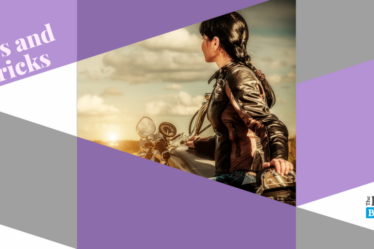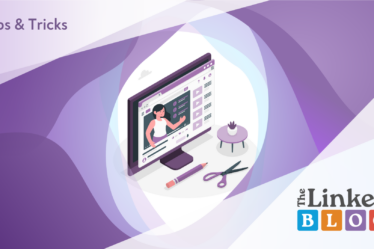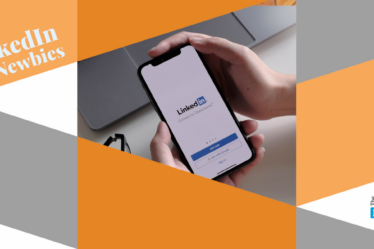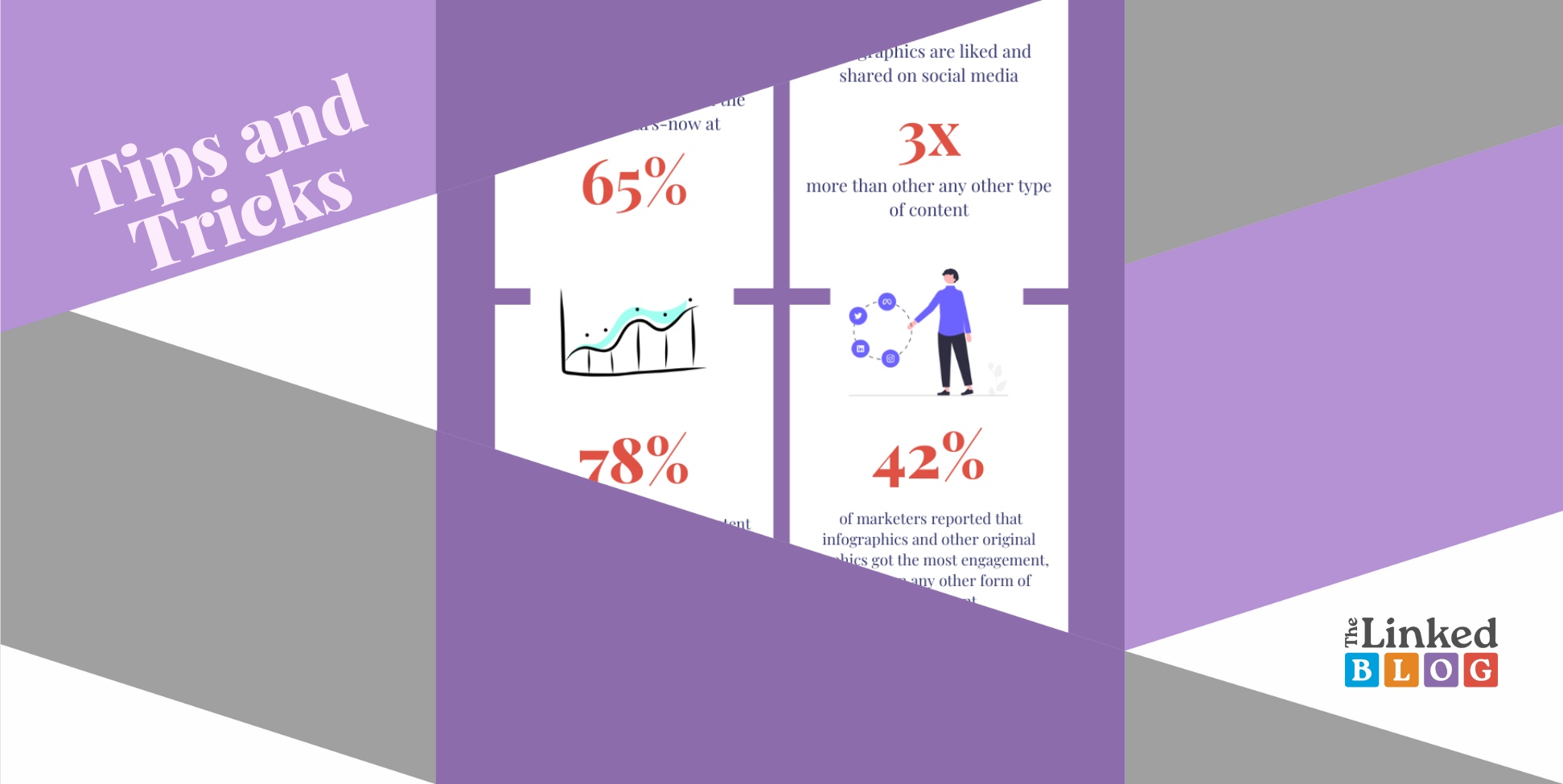
The human brain can process entire images that the eye sees for as little as 13 milliseconds, according to MIT neuroscientists. In order to maximize engagement, the visual component is essential when creating outstanding digital content. How well the text is combined with interesting photos and exciting visual content will nearly always determine how well it performs on LinkedIn. Shortly, we will put into test the statement above.
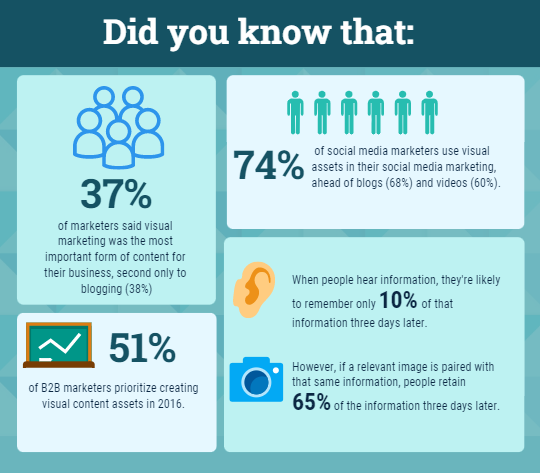
In order to highlight the importance of visual components when working on your LinkedIn strategy, let’s look at some facts. According to the Social Media Marketing Industry Report, 37% of marketers said visual marketing was the most important form of content for their business, second only to blogging. Moreover, 74% of social media marketers use visual assets in their social media marketing, ahead of blogs (68%) and videos (60%). When people hear information, they’re likely to remember only 10% of that data three days later. However, in accordance with Rule 10 of Brain Rules, if a relevant image is paired with that same information, people retain 65% of the data three days later. Finally, the bloom comes in 2016, when the Content Marketing Institute reveals that 51 percent of B2B marketers prioritize creating visual content assets.
Let’s have a look at the paragraph above this one and the infographic next to it. What do you think? Which form of content is more presentable and memorable?
Not sure how you absorbed the same information in two different formats? For the sake of the experiment, let’s try again with the insightful data from Infographics World.
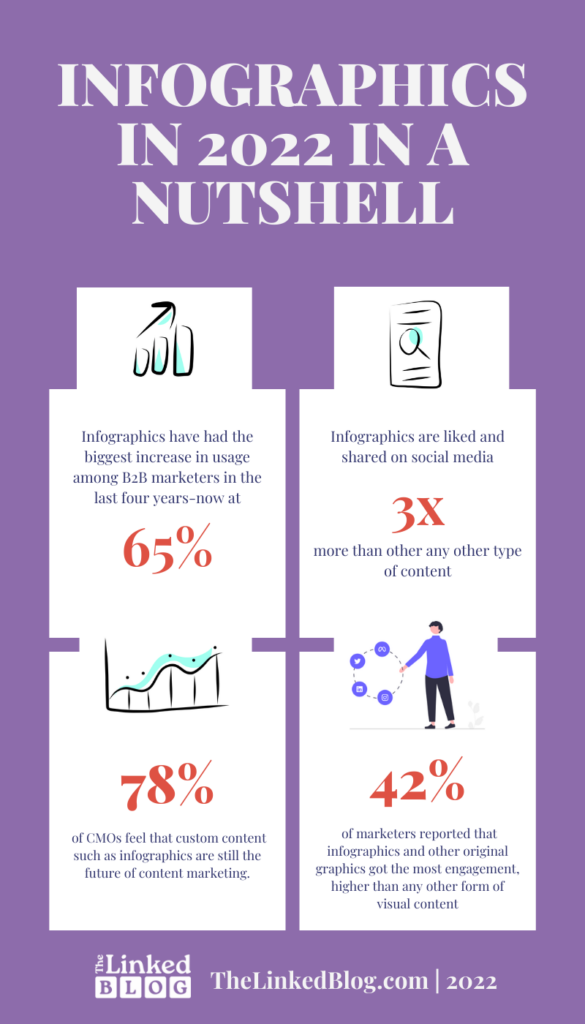
- Infographics have had the biggest increase in usage among B2B marketers in the last four years, now at 65%. (Content Marketing Institute)
- Infographics are liked and shared on social media 3 times more than any other type of content. (NN Group)
- 78% of CMOs feel that custom content, such as infographics, is still the future of content marketing. (Demand Metric)
- Infographics can increase web traffic by 12%. (Demand Gen Report)
- 42% of marketers reported that infographics and other original graphics got the most engagement, higher than any other form of visual content. (Venngage).
What do you think? Is it more engaging to present data with bullet points only or with supporting visuals like infographics? Bear in mind that posts on LinkedIn that contain images have a 98% higher comment rate. Therefore, using infographics will make your posts more engaging on LinkedIn where the average user spends only 17 minutes each month. Now that we’ve tested and already know the difference between the two types of content, let’s dive more into the world of infographic marketing and how we can use it in our next LinkedIn post.
What is an infographic and Infographic Marketing?
An infographic is a visual representation of data or an idea. It’s a method of displaying text-based data in a visually appealing format. To explain an idea, use illustrations, graphs, and little text. Moreover, infographics are an effective visual communication tool. The most visually striking, imaginative infographics are frequently the most successful because they capture and hold our attention. An infographic’s visuals need to accomplish more than just intrigue and captivate the viewer. They must aid in our comprehension and retention of the infographic’s material. Therefore, make sure you use specific messages for relevant audiences.
The use of infographics to convey a brand’s message is known as infographic marketing.
This systematic approach to content marketing allows businesses to distinguish among rivals while improving brand visibility. Most infographics are designed with a specific audience in mind, with the goal of educating or persuading visitors. Marketers choose infographics because of their ability to provide information in a simple and straightforward manner. When utilized appropriately in marketing, infographics may cut through the clutter and reach a specific audience. Infographic marketing is used to catch the attention of an ever-increasing population with short attention spans.
Examples of How to use infographics in your next LinkedIn post
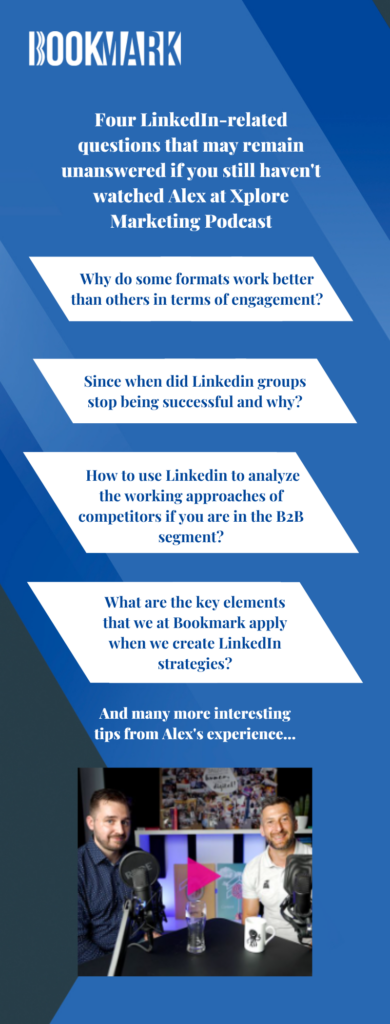
1. Summary or #SneakPeek of an event, video, podcast
Alex, the founder of BookMark (a specialized agency for Linkedin marketing), was a guest on the Xplore Marketing Podcast and they discussed the topic of how LinkedIn, the largest business social network, can help build a strong employer brand.
Although the video was already shared on the company’s LinkedIn page, we can create an infographic with the main topics that are discussed in that video. In this way, we will create a FOMO (fear of missing out) effect and customers will be more likely to watch the video when they learn enough about the content of the video (but be careful not to give away everything!).
We will be spreading awareness around the video and even though the customer does not watch the whole video, they will be aware of the content that is being discussed. Or in our case, about the answers that Alex gives with his participation.
2. Repurposing your most successful blog posts
Repurposing content helps you increase the value of your content by converting it into a different format, such as converting the meaning of a blog post into an infographic. Although the messaging is the same, the medium or manner in which it is ingested differs.
Let’s be honest, it takes a lot of willpower to read a two-page blog post on a Monday, during your lunch break, or on your way to work. Even though your content might be very appealing to your customers’ interests, they would rather consume a shorter form of content on busy days. That being said, the same content from your blog post can be served in smaller pieces of infographics and the customers can consume the same information the whole week.
Here is a repurposing example of one of the blog posts that drew a great amount of attention during the last few weeks – about the best ways to use UTM parameters on LinkedIn.
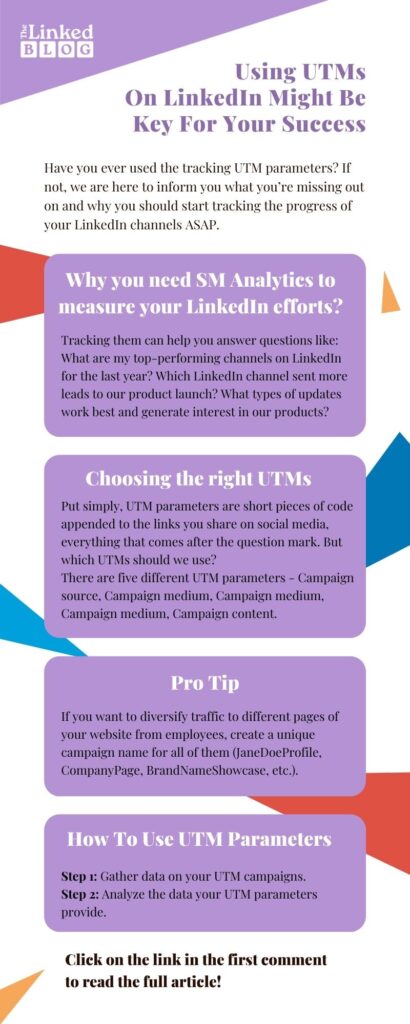
Conclusion
Infographics are a powerful tool that you can use in your LinkedIn posts to target specific customers. The format can help you diversify the type of posts you share, so there is enough specific content for each group of persona you are trying to attract and engage.
Keep in mind that no matter how strong your written content may be, its effectiveness is nearly always determined by your ability to combine it with appealing illustrations and exciting visual content. At the same time, no matter how successful your infographics are, the diverse content is still key to the success of your LinkedIn marketing strategy. Bear in mind that everybody digests content differently. Therefore, don’t include only one specific type of content – explore your options, and experiment. Repurpose your content and see which format best works for your audience!
Contact our team if you want to discuss the topic further or if you need professional help for your or your company’s presence on LinkedIn.

